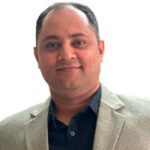In modern software development, Quality Engineering (QE) has become essential for delivering reliable, high-performing products. Teams no longer treat quality as an afterthought; they integrate it into every stage of the development process. As user expectations rise and competition intensifies, ensuring that software is free of defects, secure, and scalable has never been more crucial.
Quality Engineering embeds testing and quality practices early in the development lifecycle. By automating tests, continuous integration, and prioritizing collaboration, QE helps teams catch issues early, ensuring the software meets functional testing and user expectations without sacrificing speed.
Balancing speed and quality has transformed how software teams work. Agile and DevOps practices now emphasize continuous quality throughout development, making Quality Engineering a cornerstone for success.
According to a Forrester Research report, 77% of software professionals believe that a focus on quality is essential to business success in the age of agile development and DevOps. This statistic highlights the growing recognition of quality as a driver of long-term success in the software industry.
Quality Engineering in the Software Development Industry
Quality engineering is the key component of the software development lifecycle. It suggests that quality is a fundamental idea from the beginning rather than an afterthought. Quality engineering improves the end product and can result in reduced costs and fewer risks by doing quality checks at every stage, from design to deployment, using the Shift-Left Testing technique.
Additionally, quality engineering synchronizes technical advancement with commercial requirements. Knowing what customers need enables you to create solutions that are both practical and in line with your company’s goals. which is essential since technology distinguishes businesses across a range of sectors.
Key Responsibilities of a Software QA Engineer

The responsibilities of a software QA engineer are diverse and include:
- Test Planning: Creating a thorough test plan that specifies the goals and approach of the testing.
- Test design: Test design involves developing thorough test cases and scenarios by the specifications and design documentation.
- Test execution: Testing to find errors and problems is known as test execution.
- Defect tracking: Tracking flaws involves keeping track of them, managing them, and making sure they are fixed before release.
- Performance testing: Verifying that the program operates effectively in a range of scenarios.
- Automation testing: This is the process of creating scripts to increase productivity by automating repetitive testing operations.
Methodologies and Frameworks
Agile and DevOps are revolutionary paradigms that are changing how we tackle conventional approaches in the fast-paced world of software development today.
Software development has changed due to Agile and DevOps, which emphasize efficiency and teamwork. These approaches are well suited to quality engineering, which emphasizes continuous integration and delivery to facilitate quick iterations without sacrificing quality.
Agile methods and quality engineering work together to provide solutions that satisfy changing consumer demands and expectations while allowing for quick reactions to market shifts. In a similar vein, combining quality engineering and DevOps encourages continuous software testing services and techniques, which help the software industry’s fast release cycles.
By automatically evaluating each code update, this method seeks to lower errors and improve overall software dependability. This revolutionary change enables us to provide top-notch software at the pace demanded by the market.
The Significance of Software Quality Engineering
Providing high-quality software
The primary goal of Software QA Engineering is to guarantee that the software meets the highest standards. Software is considered to be of high quality if it is error-free, dependable, fits user needs, and functions well. High-quality software lowers the chance of failures, increases user satisfaction, and lowers the expense of post-release bug fixes.
Reliability and performance
Software QA engineers ensure that the program remains dependable and operates effectively in various scenarios. This is especially crucial in the modern world since software programs are frequently mission-critical, which means that malfunctions can have serious repercussions.
Security
QA engineers additionally concentrate on security testing to make sure the software is impervious to attacks and data breaches in a time when cybersecurity risks are widespread. This entails checking for flaws and making sure security features are applied appropriately.
Cost-effectiveness
The project’s total cost can be considerably decreased by making an early investment in quality assurance. Detecting and repairing bugs early costs far less than addressing flaws later in the lifecycle. Software QA Engineering should be given top priority by enterprises due to its cost-effectiveness.
For example, let’s consider one of the most trending platforms of today.
How Spotify Delivered Product Quality at Speed
Spotify overcame challenges like long deployment cycles and inefficient scaling by focusing on Quality Engineering Productivity. This approach improved code quality, collaboration, resource utilization, and rapid development.
Key strategies:
- Backstage: Centralized resources and tools for streamlined development.
- Golden Paths: Standardized bootstrapping for faster deployment and better environment management.
- Tingle CI/CD: Automated build, deployment, and release processes.
- Test-Certification Program: Gamified testing with build time and code coverage reports.
As a result, Spotify reduced deployment cycles, sped up developer onboarding, and improved overall delivery speed.
Future of Software QA Engineering
Software QA engineering appears to have a bright future. The demand for top-notch software will only grow as technology develops more. The industry’s future is being shaped by emerging trends like automated testing, AI in testing, and continuous integration and delivery (CI/CD). To be relevant, software QA engineers will need to keep up with current changes and constantly improve their abilities.
Machine Learning and AI in QA
Software QA Engineering is changing as a result of machine learning (ML) and artificial intelligence (AI). Defect identification, test case creation, and predictive analytics can all benefit from AI. ML algorithms can recommend test cases and forecast future failures by analyzing historical data. The accuracy and efficiency of QA procedures are improved by the incorporation of AI and ML.
Automated Testing
Because it helps to cut down on the time and effort needed for testing, automation testing is becoming more and more significant. For automated testing, Selenium, Appium, and TestComplete are popular tools. To meet the demands of the industry, QA engineers must be adept with these tools.
Continuous Integration and Delivery (CI/CD)
Software updates must be delivered promptly and effectively, which requires CI/CD procedures. By making sure that every build is extensively tested before deployment, QA engineers play a crucial part in CI/CD pipelines. A solid grasp of CI/CD tools and procedures is necessary for this.
Principles of Product Quality Engineering that Facilitate Faster Software Delivery
Product Quality Engineering (QE) shapes the development and delivery of software products by adhering to fundamental principles.


Principle #1: Preventing rather than detecting
A seamless delivery is ensured by proactively recognizing risks and putting preventive measures in place to limit problems.
Principle #2: Quality shift
For overall efficacy, Left & Right Quality is ingrained throughout the development lifecycle.
Principle #3: Cooperation and teamwork
To guarantee effective cooperation, QE promotes open communication, shared ownership, early problem detection, ongoing feedback, and automation.
Principle #4: Constant adaptation & improvement
Maintain the highest levels of quality by consistently improving procedures, instruments, and techniques.
Principle #5: Analysis and measurement
Teams use defect detection rate, customer satisfaction scores, and Net Promoter Score (NPS) to assess procedures and guide decisions.
Principle #6: Encouraging a culture of quality
establishing a cooperative atmosphere where all participants accept responsibility for quality and encouraging ongoing development
Principle #7: Business-driven testing
QE provides business owners with the instruments and procedures they need to take an active role in testing.
Principle #8: Innovation & automation
By managing tedious activities and freeing up QA people to focus on product development and quick iteration, automated tools and frameworks accelerate innovation. High code quality is ensured by continuous CI/CD pipeline testing, which reduces expenses and time to market.
Principle #9: User-centric focus
To guarantee consistency with user expectations, QE actively addresses usability concerns, prioritizes testing according to user demands, and continuously solicits input.
How People10 Helped a Leading Airline Modernize Software Delivery with DevOps
A leading American airline sought to modernize its software development and deployment processes. The goal was to increase agility, enhance collaboration between teams, and accelerate the release of new features to improve customer experience and operational efficiency.
People10’s Approach: People10 collaborated closely with the airline to design and implement a comprehensive DevOps strategy and roadmap. This involved a phased approach, starting with the adoption of key DevOps practices, such as:
- CI/CD: Automated continuous integration and continuous deployment to accelerate development cycles and reduce time-to-market.
- Infrastructure as Code (IaC): Streamlined infrastructure provisioning and management through automation.
- Automated Testing: Integrated testing processes to ensure high-quality code and faster release cycles.
The implementation led to improved software reliability, increased operational efficiency, and a significant reduction in time-to-market for new features.
Key outcome:
- Faster time-to-market for new features.
- Enhanced collaboration between development, operations, and QA teams.
- Increased software reliability and operational efficiency.
To read more about this successful partnership and the full implementation details, check out the full case study.
Your Trusted Partner in Quality Engineering
At People10, we are dedicated to being your strategic partner in quality engineering. We design tailored solutions to help you deliver software that meets the highest standards of quality, performance, and reliability.
Our team of expert quality engineers works seamlessly with your teams, integrating into your existing workflows to augment your development process and elevate your capabilities.
We’re committed to helping you innovate with confidence. Our services span the entire software development lifecycle—from risk analysis and requirement validation to automated testing and continuous improvement. By leveraging our quality engineering expertise, we help reduce costs, improve efficiency, and drive business growth.
People10 places continuous improvement at the heart of everything we do. We stay ahead of industry trends, embrace emerging technologies, and push the boundaries of quality engineering to ensure your software delivers the best results.
Let us help you transform your software into a high-performance, reliable, and secure solution.
Join Us on the Journey to Excellence
Together, we’ll unlock the full potential of your software and deliver solutions that are technologically advanced, reliable, secure, and user-friendly.
Author
Kamal Chauhan excels in DevOps and automation, focusing on infrastructure and application deployment solutions. He designs and implements automated deployment pipelines for diverse applications and sectors.




